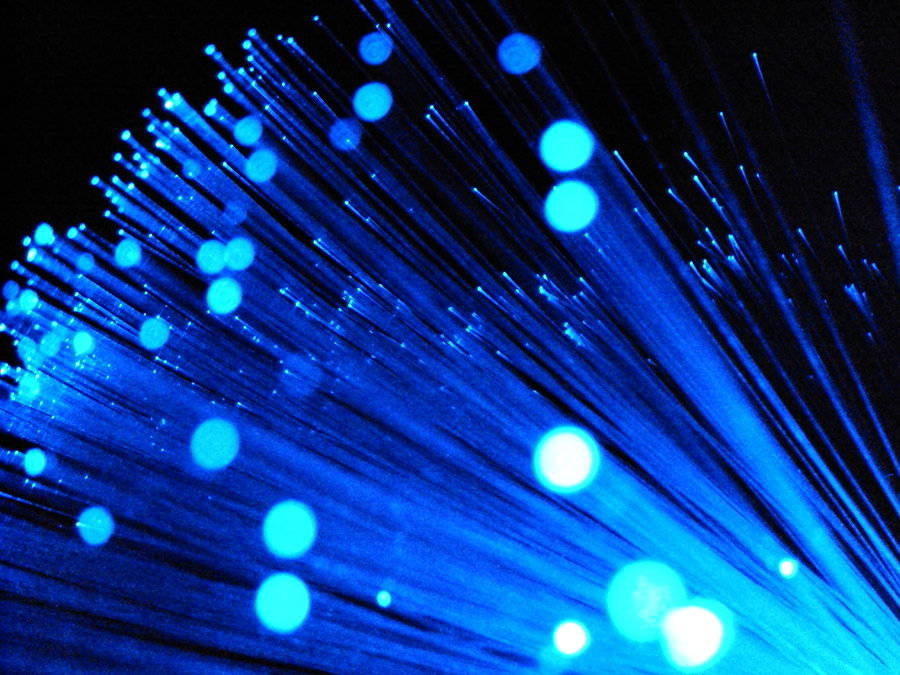Fujitsu To Reveal Terabit Optical Transport System At MWC

MWC Fujitsu is preparing to ship an optical transport platform designed for terabit networking over long distance, claimed to be capable of lowering power consumption and reducing CO2 emissions across the network.
The 1FINITY Ultra Optical System comprises the T900 Series Transponder and L900 Series Optical Line System, and is capable of data rates of 1.2 terabits per second (Tbps) using a single wavelength, and future upgrades will take this to 1.6 Tbps, Fujitsu said. Both are rack-mounted systems.
The platform will be available in the first half of Fujitsu's fiscal year 2023, which runs from April 1. It will target communications service providers (CSPs) and cloud infrastructure providers (CIPs) globally, starting with customers in Japan, North America and also Europe.
According to Fujitsu, the T900 Series Transponder can deliver data rates of 1.2 Tbps on a single wavelength, thanks to a newly developed high-performance DSP and ultra-high-speed Coherent Driver Modulator (CDM) to enable 135 Gbaud modulation.
This 5nm transponder technology lowers the power per bit by 39 percent compared to the previous generation 100 Gbaud 7nm technology, according to Fujitsu figures.
The T900 Series Transponder also incorporates closed-loop liquid cooling technology.
The L900 Series Optical Line System features Fujitsu’s continuous C+L ROADM architecture which allows for an expansion of the transmission capacity per optical fiber by handling multiple wavelength bands (C-band, L-band) in a single product.
- Bosch-backed VCs pour more funds into Brit quantum silicon chips
- IBM cheapens Oracle by delivering promised power-up for some POWER servers
- Classiq to school academia in quantum computing with help from Microsoft
- Fujitsu re-org sparks alphabet soup splatter: GSBG splits into GTSBG and GBSBG
It also makes use of forward Raman amplification to amplify the signal as it travels along the fiber, compensating for any signal loss and extending the reach. This allows a 400G wavelength to be transported up to 6,000km without regeneration, according to Fujitsu data.
These technologies will are intended to support customers in improving the scalability of their network infrastructure, and - we're told - will also contribute to the decarbonization of the entire optical network because the system requires fewer transponders and therefore decreases power consumption.
Fujitsu will be showing its new optical transport at the MWC Barcelona conference from February 27 to March 2, and then at the Optical Fiber Communication (OFC) gathering in San Diego from March 7 to March 9. ®
From Chip War To Cloud War: The Next Frontier In Global Tech Competition
The global chip war, characterized by intense competition among nations and corporations for supremacy in semiconductor ... Read more
The High Stakes Of Tech Regulation: Security Risks And Market Dynamics
The influence of tech giants in the global economy continues to grow, raising crucial questions about how to balance sec... Read more
The Tyranny Of Instagram Interiors: Why It's Time To Break Free From Algorithm-Driven Aesthetics
Instagram has become a dominant force in shaping interior design trends, offering a seemingly endless stream of inspirat... Read more
The Data Crunch In AI: Strategies For Sustainability
Exploring solutions to the imminent exhaustion of internet data for AI training.As the artificial intelligence (AI) indu... Read more
Google Abandons Four-Year Effort To Remove Cookies From Chrome Browser
After four years of dedicated effort, Google has decided to abandon its plan to remove third-party cookies from its Chro... Read more
LinkedIn Embraces AI And Gamification To Drive User Engagement And Revenue
In an effort to tackle slowing revenue growth and enhance user engagement, LinkedIn is turning to artificial intelligenc... Read more

